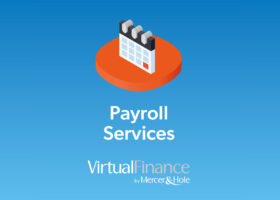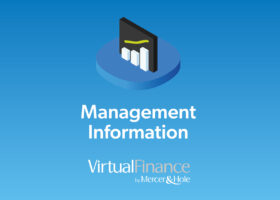SORP changes between SORP 2005 and FRS102 SORP
Core Modules
Format of accounts:
Module 1 – Changes to the Trusteesí Annual Report
The requirements for the Trustees’ Annual Report vary based on the size of the charity. These criteria are different to the eligibility limits to those determining which SORP to follow.
Large charities are those that are subject to statutory audit under charity law. This means they fit the requirements of:
- Gross income exceeds £500,000 or
- Gross income exceeds £250,000 and total assets exceed £3.26m.
Changes from SORP 2005 that affect all charities are:
- All trustees must be listed; the maximum of 50 has been dropped.
- Must disclose any policy for holding reserves, and now must disclose any decision to not hold reserves, with reasons.
Changes from SORP 2005 that affect larger charities are:
- Must provide explanation of social investment policies and provide an explanation on how programme related investment contributed to the achievement of the objectives.
- Explanation of the financial effect of significant events.
- Statement on risk management adjusted to description of principal risks and a summary of plans for managing them.
- Must disclose remuneration arrangements for key management.
Module 4 – Statement of Financial Activities (SoFA)
The basic structure remains the same, however the number of headings within the SoFA have been reduced. Many of the headings have been renamed and a full list of the headings can be found here: Charities SORP website
- Comparatives are required for all columns in the SoFA, by either additional columns or notes to the accounts.
- Gains and losses on investment assets are to be taken through the SoFA before the total for ‘net income/expenditure’.
- Additional ‘other gains and losses’ heading is for extraordinary items that fall outside other headings.
- Discontinued operations must be shown by separate column.
- It also clarifies that:
- The conversion to income of endowments may be shown either under other income or by the transfer line.
- Transfers between funds line must net to nil.
- Capitalisation of internally generated databases is not allowed.
- Separate disclosure of exceptional items based on materiality.
Module 10 – Balance Sheet
There have been no substantive changes to the balance sheet in the new SORP.
- Capitalised goodwill has a maximum life of 5 years unless economic life can be measured reliably.
- Property let and occupied by another group undertaking, is not excluded from investment property.
- Unlisted investments may be re-measured at fair value.
- Increased disclosures for intangible fixed assets, investments, stock and liabilities.
- For contingent items, an explanation is required of uncertainties and reimbursements.
- Social investments are shown as a separate class of investment.
Module 14 – CASH FLOW STATEMENTS
The cash flow statement is mandatory and is based on the new GAAP and has three mandatory headings: cash flows from operating activities, investing activities and financing activities. The choice of direct or indirect method is still allowed.
Accounting Policies and Definitions
Module 2 – Fund Accounting
The classification of funds as unrestricted, restricted and endowment funds remains the same. The new SORP requires the transfer between funds line to net to nil. References to loans between funds have been removed and now non-temporary transfers must be between funds of similar purpose.
Module 3 – Accounting Policies, Policies, Concepts and Principles
- Trustees are required to assess going concern with a 12 month timeframe of review from the date the accounts are approved.
- Alternative measurements of fair value is allowed.
- Individual accounting policy changes are elaborated on in their own modules.
Module 5 – Recognition of Income
The changes from SORP 2005 are:
- It is now required that income should be recognised when it is ‘probable’ rather than ‘virtually certain’ as it was before.
- In some circumstances income from contracts can be classified as restricted income.
- More guidance now given on time related conditions that may prevent income recognition.
- More guidance also on income recognition from wills and legacies.
- Now required that extended credit terms be included in calculation of present value of receivable income.
- Specific guidance for virtually certain requirement for insurance claims.
- Module 6 – Donated Goods, Facilities and Services Including Volunteers
Previously, income from receipt of donated goods for sale was recognised once sold or distributed, however now recognised at point of receipt at fair value. If this is impractical and/or costs of recognition at receipt outweigh the benefit to the users, then can be recognised at disposal. Donated tangible fixed assets are recognised at their fair value. Valuations of general volunteers is not allowed.
Module 7 – Recognition of Expenditure
The SORP includes the more extensive application of the requirement to discount liabilities and provisions for the time value of money where the settlement is delayed by more than 12 months and the effect is material. The suggested discounts rates are using market rate of interest or the opportunity cost of investment income lost.
There is a requirement for an accrual of annual leave and paid sick.
Module 8 – Allocating Costs by Activity in the Statement of Financial Activities
The only change is that governance costs are now included in support costs, as a separate component.
Module 9 – Disclosure of Trustee and Staff Remuneration, Related Party and Other Transactions
- The disclosure required for trustees also includes de-facto trustees.
- Trustee expenses must also include costs reimbursed and costs paid directly to third parties.
- All charities must now disclose the number of staff paid more than £60,000 in bands of £10,000.
- Total amount of unconditional donations by Trustees must be declared.
- Charity’s contributions to an employee pension fund must be disclosed.
- Terms and conditions of guarantees given from related parties.
- Further disclosures on the nature and funding of termination payments.
- And the total amount of employee benefits received by key personnel.
Module 11 – Accounting for Financial Assets and Liabilities
The SORP differentiates between basic and other financial instruments and the disclosures are long and detailed.
Module 12 – Impairment of Assets
Requirements have not changed between SORP 2005 and the new SORP. Values are at Fair Value.
Module 13 – Events After the End of the Reporting Period
No changes.
Applicable Modules
Module 15 – Charities Established Under Company Law
A strategic report is only required for medium and large companies.
Module 16 – Presentation and Disclosure of Grant-Making Activities
The new SORP requires that institutional grants are detailed in the notes to the accounts and no longer permitted in a separate publication but does allow it to be on the website if conditions are met in the Trustees’ Annual Report.
Module 17 – Retirement Benefits/Retirement and Post-Employment Benefits
Requirements for defined contribution remain the same. However where a charity has a multi-employer benefit pension scheme, and is asked to make more contributions and its share of any actuarial deficit can not be identified, the SORP requires present value calculations of additional repayments to be recognised as a liability.
Module 18 – Accounting for Heritage Assets
Previously SORP 2005 had a policy of recognition and measurement at cost or valuation. The new SORP requires recognition at historical cost or valuation with initial recognition of donated heritage at fair value where practical.
Module 19 – Accounting for Funds Received as Agents or Custodian Trustee
The only change is new guidance on consortium arrangements.
Module 20 – Total Return (Investments)
More detailed explanation of the accounting treatment of investments in permanently endowed funds on a total return basis.
Module 21 – Accounting for Social Investments
The new SORP introduces a new class of investments: social investment. This covers ‘programme related investments’ which have the same definition as SORP 2005.
There is also a new sub class of investment called ‘mixed motive investments’ which is an investment made both to further aims and generate returns.
The new SORP states that charities may use the cost model for concessionary loans. For social investments it requires fair value valuations or cost model where fair value is not practicable.
Module 22 – Accounting for Charities Pooling Investment
The new SORP provides the same new guidance on reporting of pooling of investments and sets out guidelines for that area for charities established as investment funds.
Module 23 – Accounting Branches, Charity Groups and Combinations
A flow chart is provided to identify modules associated to particular combinations.
Modules 24 – Accounting for Groups and the Preparation of Consolidated Accounts
The new SORP provides clarification on charity combinations and their treatment. An interest acquired in a charity is treated as a gain or a loss or a merger (if conditions are met). One sided transfers are not permitted so acquisitions cannot be treated as such. It is assumed goodwill has a maximum life of 5 years and negative goodwill on acquisition is treated as a gain in the SoFA of the year of acquisition. Charities must provide further disclosures where a controlling interest is acquired in a non-charitable subsidiary.
Module 25 – Branches, Linked or Connected Charities and Joint Arrangements
The new SORP specifically excludes incorporated charities from being treated as branches. They are treated as subsidiaries within group accounts, whether they are linked or connected or neither; and not in individual accounts as a branch.
Modules 26 – Charities as Subsidiaries
There is new guidance provided.
Module 27 – Charity Mergers
The new SORP sets out criteria for mergers and when charity reconstructions can be treated as such.
Module 28 – Accounting for Associates
The main change is that the current practice is now, a rebuttable presumption, that charity’s interest in associates is calculated by voting rights. There are also more disclosures.
Module 29 – Accounting for Joint Ventures
The current policy now requires the use of ‘equity method’ of accounting for joint ventures. The effect of this method is to show a charity’s share of the net income/expenditure as a single line in the SoFA and share of net assets in the balance sheet. Previously the gross equity method was required.







 7 mins
7 mins 

